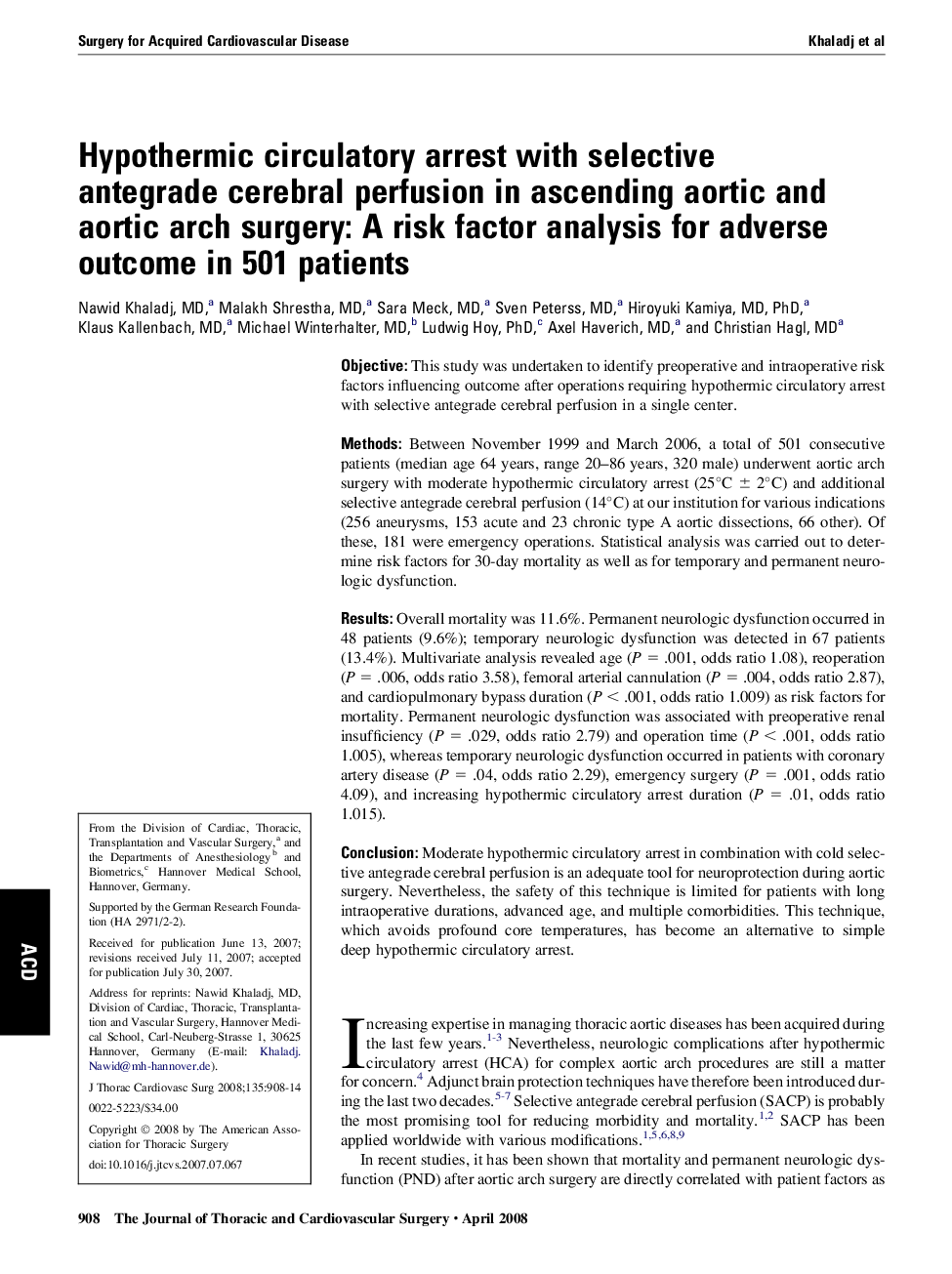| Article ID | Journal | Published Year | Pages | File Type |
|---|---|---|---|---|
| 2986610 | The Journal of Thoracic and Cardiovascular Surgery | 2008 | 7 Pages |
ObjectiveThis study was undertaken to identify preoperative and intraoperative risk factors influencing outcome after operations requiring hypothermic circulatory arrest with selective antegrade cerebral perfusion in a single center.MethodsBetween November 1999 and March 2006, a total of 501 consecutive patients (median age 64 years, range 20–86 years, 320 male) underwent aortic arch surgery with moderate hypothermic circulatory arrest (25°C ± 2°C) and additional selective antegrade cerebral perfusion (14°C) at our institution for various indications (256 aneurysms, 153 acute and 23 chronic type A aortic dissections, 66 other). Of these, 181 were emergency operations. Statistical analysis was carried out to determine risk factors for 30-day mortality as well as for temporary and permanent neurologic dysfunction.ResultsOverall mortality was 11.6%. Permanent neurologic dysfunction occurred in 48 patients (9.6%); temporary neurologic dysfunction was detected in 67 patients (13.4%). Multivariate analysis revealed age (P = .001, odds ratio 1.08), reoperation (P = .006, odds ratio 3.58), femoral arterial cannulation (P = .004, odds ratio 2.87), and cardiopulmonary bypass duration (P < .001, odds ratio 1.009) as risk factors for mortality. Permanent neurologic dysfunction was associated with preoperative renal insufficiency (P = .029, odds ratio 2.79) and operation time (P < .001, odds ratio 1.005), whereas temporary neurologic dysfunction occurred in patients with coronary artery disease (P = .04, odds ratio 2.29), emergency surgery (P = .001, odds ratio 4.09), and increasing hypothermic circulatory arrest duration (P = .01, odds ratio 1.015).ConclusionModerate hypothermic circulatory arrest in combination with cold selective antegrade cerebral perfusion is an adequate tool for neuroprotection during aortic surgery. Nevertheless, the safety of this technique is limited for patients with long intraoperative durations, advanced age, and multiple comorbidities. This technique, which avoids profound core temperatures, has become an alternative to simple deep hypothermic circulatory arrest.
